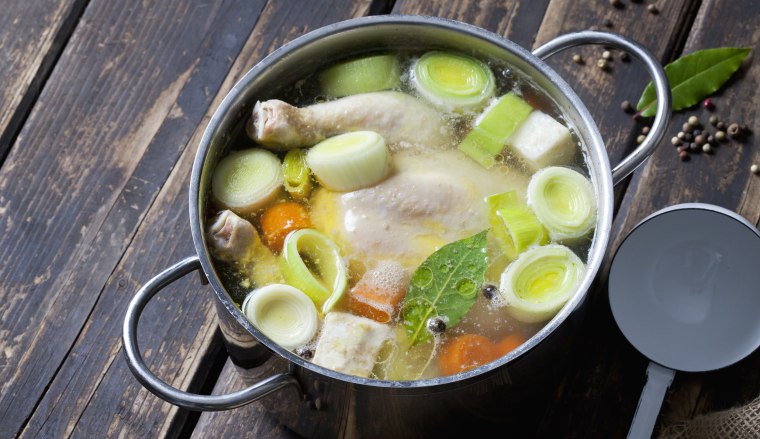Name something everyone uses but no one knows why. We’ll go first: bay leaves. Chances are you’ve used one — because for some reason recipes only ever call for one — recently, and you can relate to the the comments section of this viral TikTok (and this one, too). It attempts to describe this mysterious spice that will probably make an appearance in your favorite fall recipes. The video is funny, but it also begs the question: What do bay leaves really do? And are they dangerous to eat? TODAY Food asked a food scientist and a few chefs to weigh in. Here’s what they had to say.
What are bay leaves?
Traditionally, bay leaves come from laurel trees native to the Mediterranean region. In fact, they composed the crowns awarded to the athletes in ancient Greece. Bay leaves have also been used in cooking for centuries and were even used medicinally during the Middle Ages. These days, they’re a staple spice used in soups, stews, stocks and other dishes cooked low and slow. They’re also a popular ingredient for pickling.
What’s the difference between dried and fresh bay leaves?
Bay leaves can be bought fresh or dried; the latter being far more common. Fresh bay leaves are more potent, with one fresh leaf imparting as much flavor as two dried leaves.
What flavor do bay leaves impart?
According to Britannica, bay leaves contain approximately 2% essential oil. The oil is cineole. “Cineole has minty and cooling notes with some eucalyptus notes,” food scientist Brian Chau told TODAY. Terpenes and terpenoids, which are hydrocarbons responsible for the way plants smell, are also found in bay leaves. “They offer some citrus and wood notes,” said Chau before adding that bay leaves can also impart some peppery notes due to their concentration of methyl eugenol.
Of course, the flavor imparted depends on the type of bay leaf you use and the cooking time “Fresh bay leaves tend to be more bitter,” said chef Alexandra Shapiro, who owns two seafood restaurants in New York City, where she relies on bay leaves for her stocks. “And the longer you cook with a bay leaf, the more depth you get.”
One of the reasons people don’t believe bay leaves do anything is because on their own, they’re not as pungent as other spices. Their taste isn’t pleasant, either. However, when you add liquid, heat and time, their flavor compounds break down and become far more palatable. In fact, in addition to using bay leaves in savory recipes, Shapiro also uses them in sweet recipes. “It’s all about enhancing the pre-existing flavor profiles,” she explained.
Why do we use bay leaves whole?
It’s not easy to find ground bay leaves or bay leaf powders in stores, but it is possible. The reason whole leaves are preferred is because they don’t release as much of their intense essential oil. If you use ground bay leaves or powders, it’s easy to overdo it and find the flavors they impart overpowering. Another reason whole leaves are used is because they’re easier to take out.
Are bay leaves dangerous to eat?
“There is a common myth that bay leaves are poisonous,” said Jason Maynard, executive chef at Sogno Italian in Woburn, Massachusetts. “This is because they look similar to mountain laurel and cherry laurel leaves which are poisonous to humans and animals.” However, bay leaves sold for culinary purposes are not poisonous.
“Yes, you can eat bay leaves,” added Chau, although he notes that there isn’t much nutritional value in them. Plus, their brittle texture isn’t exactly appealing, and the leaves’ sharp, jagged edges could cut your mouth or throat. They’re also hard to digest. Like cinnamon sticks — which you can eat, but you don’t — bay leaves should be removed prior to serving.
Can you reuse bay leaves?
Much like you don’t reuse coffee grounds, don’t attempt to reuse bay leaves. Also, for optimal flavor, use dried bay leaves within a few months and fresh bay leaves within three weeks of purchasing (unless you freeze them). Stored properly, spices can last for years. However, they do lose flavor over time.
